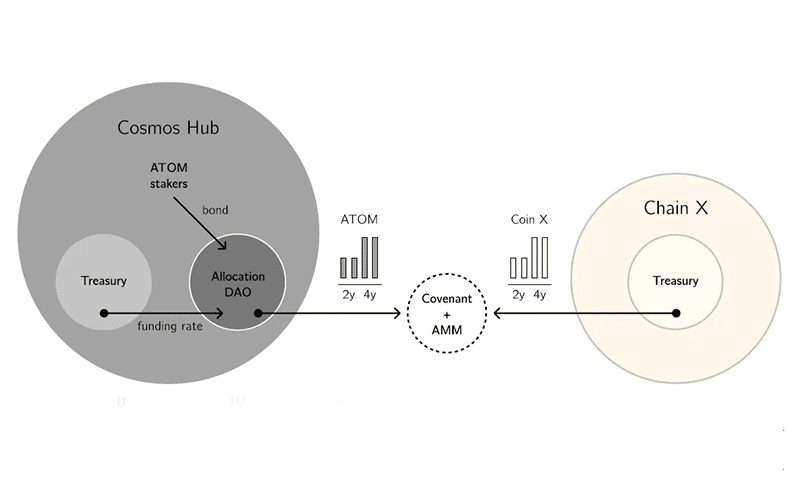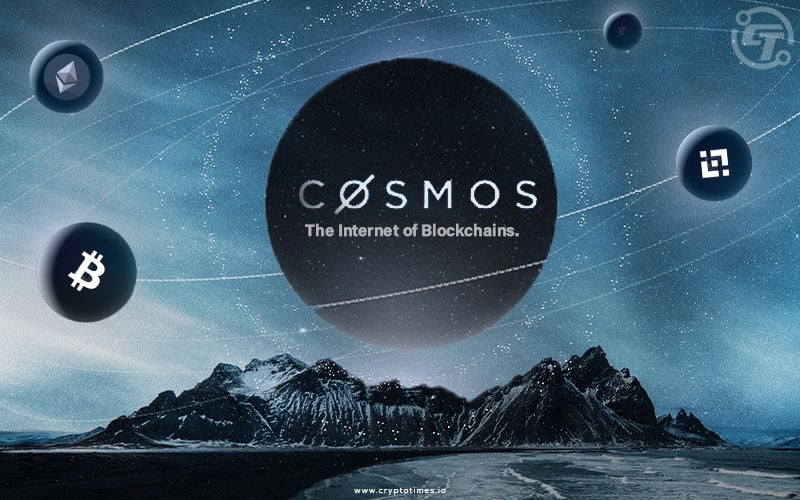After an almost 2 years of hiatus, Cosmos is back to change the world. Yeah, you read that right! At the Cosmoverse conference in Medellin, Colombia, the new COSMOS 2.0 white paper was released. Altogether, the three-year roadmap of changes radically overhauls the crypto ecosystem.
The Cosmos 2.0 whitepaper also outlines a new vision for ATOM, the native token of the Cosmos Hub. The Hub’s primary role is to serve as a router for building blockchains into the Cosmos “interchain” – a web of individual blockchains that can easily share information and assets.
The Cosmos Hub 2.0 white paper describes the Hub’s new role as the heart of interchain security, which means that other chains will be able to use the Hub to secure their own networks.
The white paper also proposes changes to ATOM’s utility and issuance schedule, which the authors believe will strengthen its informal role as an index of the larger Cosmos family of blockchains.
What is new in Cosmos 2.0?
So let’s find out what is in store as cosmos 2.0 plans to increase the network security and efficiency as well as the value of its native token ATOM.
1. Interchain Security
The Cosmos 2.0 white paper proposes interchain security, as an upcoming Cosmos feature.
All Cosmos chains use a proof-of-stake consensus mechanism similar to the one that the ethereum merge helped it to transition from a proof of work consensus mechanism. In POS, chains are secured by validators, who stake a chain’s native token in order to help process transactions.
Chains are considered more secure if they have a large and diverse pool of validators. If a single attacker acquires a large enough stake in a given network, they may be able to perform malicious network upgrades or interfere with transaction processing.
The Hub has a more diverse validator set than any of its Cosmos peers due to its maturity and visibility as the first Cosmos chain. Interchain Security, shall allow other Cosmos appchains to “rent” security from Cosmos Hub (current staked value of $2.6M) for a fee, with ATOM stakers receiving 25% of the fee.
This allows smaller Cosmos IBC appchains with a low market cap to better defend against whale validator attacks while maintaining the decentralization of its own validator network.
2. Increasing Atom Value
The white paper also introduces mechanics for increasing the value of ATOM, the native token of the Cosmos Hub. Today, speculators trade ATOM like it was an index of the Cosmos ecosystem as a whole.
ATOM’s current monetary policy dynamically adjusts based on the demand and supply of staking. ATOM inflation increases when staking is low, and decreases when staking is high. This will change into a deflationary direction over 36 months.

The investment narrative for ATOM will alter when the Cosmos Hub, which has the ATOM token at its core, is deployed to safeguard a larger swath of the Cosmos ecosystem through interchain security.
Chains that choose to borrow the Hub’s security will have direct alignment with Cosmos with the ATOM. It allows them to inherit the security of the ATOM.
As the Cosmos Hub will soon bake liquid staking into the core of the network’s code ATOM token will gain value by leveraging liquid staking.
ATOM holders will earn interest by staking their tokens with validators, however their tokens will be locked in an address for a certain time.
3. Interchain Scheduler
Next thing in Cosmos 2.0 roadmap is Interchain Scheduler, a cross-chain marketplace MEV (maximum extractable value) solution. The Interchain Scheduler will help appchains in formally selling a portion of their blockspace as tradable tokenized NFTs.
The goal is to make it easier for users to execute block transactions in a trust-minimized manner.
Ethereum chain also suffers from MEV problems, and it solves them on a transparent off chain market using flashbots, while Interchain Scheduler will solve them on chain.
4. Interchain Allocator
This is nothing but notifying everyone that the treasury funds of Cosmos Hub will be used to invest in and fund new Cosmos chains via on-chain agreements.
Stakers can store their ATOM in DAOs, giving them voting power over the DAO and the opportunity to be rewarded with Cosmos Hub funding if these DAOs succeed.
The basic idea is to make Cosmos hub a big player in the Ethereum ecosystem, aligning incentives between ATOM holders and DAOs to create public goods, similar to Gitcoin.

All of these core changes, will shift Cosmos away from its current “equal playing field” state, in which ATOM lacks value accrual, and toward a position that places ATOM at the center of the ecosystem.
Subscribe to The Crypto Times for more updates on Cosmos 2.0!







